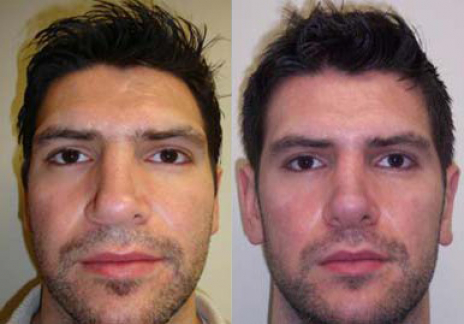 Rhinoplasty is one of the most satisfying procedures that we do, from a patient and a surgeon’s perspective. With realistic patient expectations, most patients are happy with results, do well with the normal healing process, and are extremely pleased with the end result both cosmetically and from a breathing standpoint.
Rhinoplasty is one of the most satisfying procedures that we do, from a patient and a surgeon’s perspective. With realistic patient expectations, most patients are happy with results, do well with the normal healing process, and are extremely pleased with the end result both cosmetically and from a breathing standpoint.
Informed Consent
Giving the patient informed consent means explaining all of the possible risks involved with rhinoplasty. Many people are concerned about things they hear in the media as well as stories they may have read online or discussed with former patients that have had the procedure in the past. Common concerns that patients voice during their consultation are, “I don’t want to end up like Michael Jackson,” “I don’t want to have a “pig” nose,” or “I don’t want too much of a slope or a pinched look.”
Revision Rhinoplasty
The national rate of revision rhinoplasty is around 10%. This means 1 out of every 10 patients who undergo rhinoplasty have some issue with their nose that needs to be “fixed” with a second procedure, whether for cosmetic or functional breathing issues. While this is the national average, in our practice this percentage is much lower.
The Risks
Every patient should understand there are risks involved with rhinoplasty, but that it is a very safe procedure with relatively low complication rate if done by an experienced surgeon with adequate training in a certified surgery center or at a hospital with anesthesiologists.
Anesthesia
Most rhinoplasties are performed under general anesthesia and there are risks with general anesthesia. If you don’t have a history of problems with anesthesia, then these risks are significantly reduced. If the center where surgery is being performed is a certified surgery center or hospital which is staffed by board-certified anesthesiologists, then your risk is also significantly reduced.
Bleeding
Bleeding is normal after rhinoplasty for a few days. Usually, this is just an ooze, but more significant bleeding would be considered a complication of rhinoplasty. This would be something to call your surgeon about and should be able to be controlled with some packing until the bleeding resolves. On rare occasions, the bleeding could require a return to the operating room.
Scar Healing
Poor scar healing is a potential complication of any surgery involving a skin incision. Incisions for rhinoplasty typically heal very well. A majority of the incisions are internal. If you have an open rhinoplasty, there will be an incision on your columella (between your nostrils) which in most cases heals well and is not noticeable. On rare occurrences, if the incision is not satisfactory, dermabrasion can be done to blend the scar and make it less noticeable.
Breathing Complications
Breathing complications are something that is explained to anyone having nose surgery. The goal of any rhinoplasty, whether for cosmetic or functional reasons, is to improve or at least maintain breathing and not to compromise breathing for a cosmetic outcome. In the right hands, you should always breathe better after rhinoplasty than you did before, but this will always be considered a potential risk with surgery of the nose.
Changes in the Skin
Changes in skin quality and sensation can occur with rhinoplasty. Numbness is a common issue with rhinoplasty, and is almost always temporary and resolves in the first few months after surgery. Thin-skinned patients are more at risk for damage to the skin after rhinoplasty either from the healing process or trauma during the procedure. Nasal septal perforation (a hole in the nasal septum) is a possibility anytime the septum is operated on. This is very rare and is usually of no consequence, but could require repair if it is causing bleeding or significant crusting after the healing process.
Poor Cosmetic Outcome
Poor cosmetic outcome is the most common concerns with rhinoplasty. Common issues that may arise are asymmetries, too much or too little nasal hump removal, and incomplete tip narrowing, pinching of the tip, and nostril asymmetries. The risk of these types of complications depends heavily on the experience and skill of the surgeon. The best way to decrease your chances of these types of complications is to choose an experienced surgery who is comfortable performing the type of rhinoplasty you are interested in. Looking at before and after photos of patients operated on by your surgeon will give you some idea about what kinds of outcomes you can expect. You should always ask how many rhinoplasties you surgeon performs annually. A surgeon who performs more than 100 rhinoplasties per year and has had adequate training in rhinoplasty and should be comfortable with most cosmetic expectations.
If you are interested in learning more about rhinoplasty, schedule your consultation at Providence Facial Plastic & Cosmetic Surgery today.
